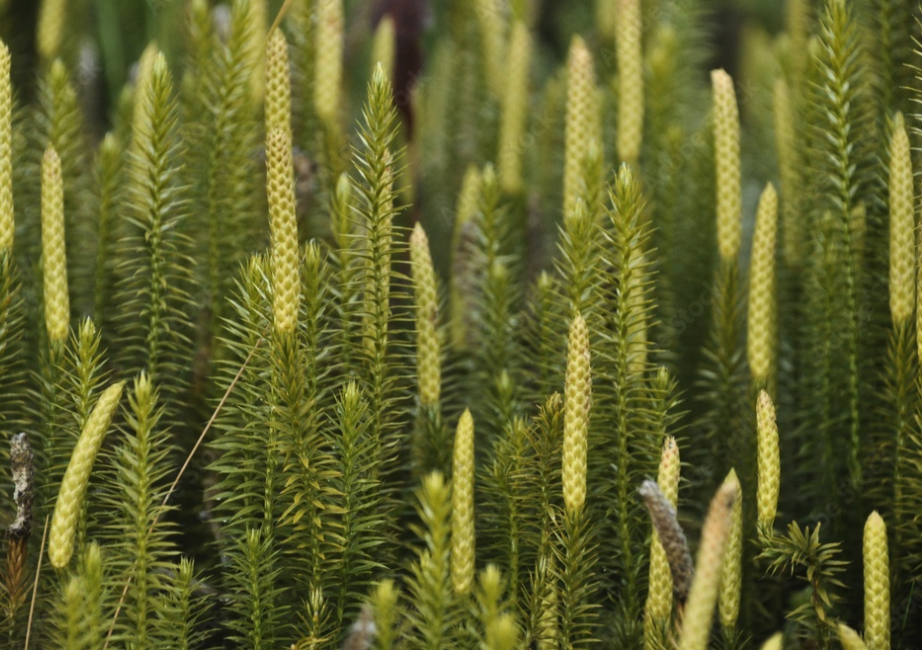Common club moss is found world-wide and grows abundantly in moors and dry, evergreen forests. However, if the forests are cut down, the plant shrivels up and turns yellow due to the direct sunlight. Common club moss thrives in acidic, well-composted habitats while being sheltered with shade.
The plants develop yellowish spikes which yield spores called club moss powder. Belonging to the moss family lycopodiaceae, its botanical name is lycopodium clavatum but it is also known as vegetable sulphur, stag’s-horn, wolf’s claw and running ground-pine.

The Benefits of Club Moss
In herbal medicine, the plant has an important place for its haemostatic, anti-spasmodic and healing properties. The unusual quality of club moss’ powder to repel water has asserted the importance of this plant in many herbal treatments.
Spores, releasing the club moss powder have been utilised for a multitude of skin diseases that require a rash or sore to stay dry.
Yellow club moss powder is not only used to stop bleeding, but also topically for various skin disorders, bed sores, and eczema. The powder may also be used to absorb fluids from damaged tissue in injuries because of it’s unique qualities.
The Magical Benefits of Club Moss Tea
Club moss tea is beneficial to help relieve pain from the urinary system, club moss tea can help to ease the discomfort of the formation of gravel in the kidneys and renal colic.
Club moss tea’s historical use to treat skin conditions is still recommended for a few treatments, these can include varicose veins and many rashes.
When utilising club moss to treat spasmodic retention of urine (due to cramps), cystitis, and pain in the kidneys, ureters and bladder, herbal teas are a preferred method to consume the plant’s healing properties.
The tea is recommended for menstrual and many other cramps due to its ability to relax the muscles herbally. If you’re experiencing shortness of breath, liver complaints and chronic constipation, club moss tea is recommended as an herbal treatment to reduce these symptoms.
How to Make Club Moss Tea
To make club moss tea, use one teaspoonful of dried herb per cup of boiling water, infuse for 3-5 minutes, strain and drink one cup daily, before breakfast.
For haemorrhoids and inflammation of varicose veins, use the following recipe:
- 50 g Common club moss
- 50 g Cranesbill
- 50 g Horehound
- 50 g Shepherd’s purse
Place the above herbs in a bowl, mix well and store in a sealed glass jar away from sunlight. Infuse one teaspoonful of the mixture with one cup of boiling water, steep for 5-10 minutes and strain. Drink two cups daily.
For severe cramps in the legs and feet, a club moss foot bath or pillow will bring relief. Fill a pillowcase with 100-300 g of club moss and apply to the cramped muscle overnight. The pillow will retain its effect for approximately one year. For cramps in the bladder, a club moss sitz bath would be most beneficial.
Find out more about the medicinal benefits of club moss and other herbs through enrolling in our Online Herbal Medicine Course today!
